This month’s challenge at camera club was to create a photographic essay which was exactly the challenge I set myself when spending time with the Victorian Wader Study Group and the team of rangers and volunteers working to save Hooded Plovers.
Victorian Wader Study Group members
.
Members of the VWSG survey various areas to see where the target birds are foraging. Once a site has been selected a date is chosen and, weather permitting, the team get to work.
The net is carefully set to ensure it doesn’t tangle when the cannons are fired. When all looks good the net is camouflaged with sand and seaweed as great care is taken to ensure the birds feel safe returning to the area.
Preparing the cannons
The team members work together brilliantly. The guys above are skilled at preparing the charges that will fire projectiles which are attached to the net, to trap foraging birds. These cannons will be connected via an electrical system to a well-hidden control box.
While this work is being done others are setting up the control box, placing decoy birds in the desired foraging area and erecting a hide where everyone can remain hidden.
Once everything is set and there is no longer any obvious sign of human activity the twinkling begins. I believe the word ‘twinkling’ was first used by Clive Minton who is the renowned cannon-netting expert who leads many wader study expeditions. Twinkling is the act of slowly, patiently and subtly encouraging waders to forage in the desired area. I’ve seen this done by twinklers on foot and using a kayak. It takes skill to twinkle without causing the birds to leave the area completely – though this does happen sometimes.
Firing the cannons
.
The team work in virtual silence, whispering instructions to each other using hand-held radios. Clive coordinates the team, listening to advice from the twinklers and ensuring that whoever is responsible for firing the cannons knows exactly what is happening.
A visitor to the beach would be unaware of all this activity until someone miraculously appears to explain and ask them to keep well away.
When enough birds are in the foraging area and none appear to be in danger from the cannons, Clive orders the firing.
The noise is loud, very loud, and some birds are able to escape while others are trapped beneath the netting. At least two ‘birds’ at the left of the image above are decoys that were carefully positioned to look natural and to tempt Pied Oystercatchers into the target area.
Birds are rescued
.
I have a flurry of images of members of the team sprinting towards the trapped birds to ensure that none are held under water by the net. It was impressive to watch how the quiet beach suddenly became alive with people.
Captured birds are placed into pillowcases so they can be held comfortably and safely. Birds settle when they are in the dark.
Birds in pillowcases – waiting their turn
This is a bird photograph that I had never imagined taking! By hanging the pillowcases the birds are kept cool and comfortable while the team members prepare the next stage of the process.
Pied Oystercatcher – bird biometrics
Many measurements are taken and carefully recorded for individual birds. I was interested to learn that individual Pied Oystercatchers can be recognised by the patterns in their iris. I took several close ups of eyes which show obvious differences, I’ll share them another time as it was fascinating.
Pied Oystercatcher
The birds are quickly placed on their backs in a cylinder and their weight is recorded. You may be able to see the different markings in this bird’s iris.
Hooded Plover
Taking images of sustained busyness isn’t easy. The birds were clearly the only priority of the day and the shots I took had to be taken quickly as the various processes were underway.
My banding shots of the oystercatchers aren’t as clear as the shot above of a Hooded Plover chick being banded. Hooded Plovers are not captured in the same way as large flocks of waders. A small team of experts approach the nesting area and catch the chicks with a handheld net. The process of measuring and weighing is similar with some extra data being taken – perhaps the subject for another day as the clock has just ticked past 1am.
Pied Oystercatcher
As soon as the process has been completed the bird is released, sporting their brand new bands. If they are re-captured (or re-sighted) details will be added to the original data and valuable information will be gathered to assist scientific understanding of the species.
My thanks to Clive and his VWSG team, and to Jon and his Hooded Plover team – it is a privilege to spend time with you all.
My thanks also to Ray for helping with presentation for the club challenge, and to Bill for helping me choose nine images from a shortlist of thirty-six.
Happy birding
Kim
~ thank you for visiting and commenting
~ use the subscribe box if you’d like to receive a weekly email when lirralirra is updated
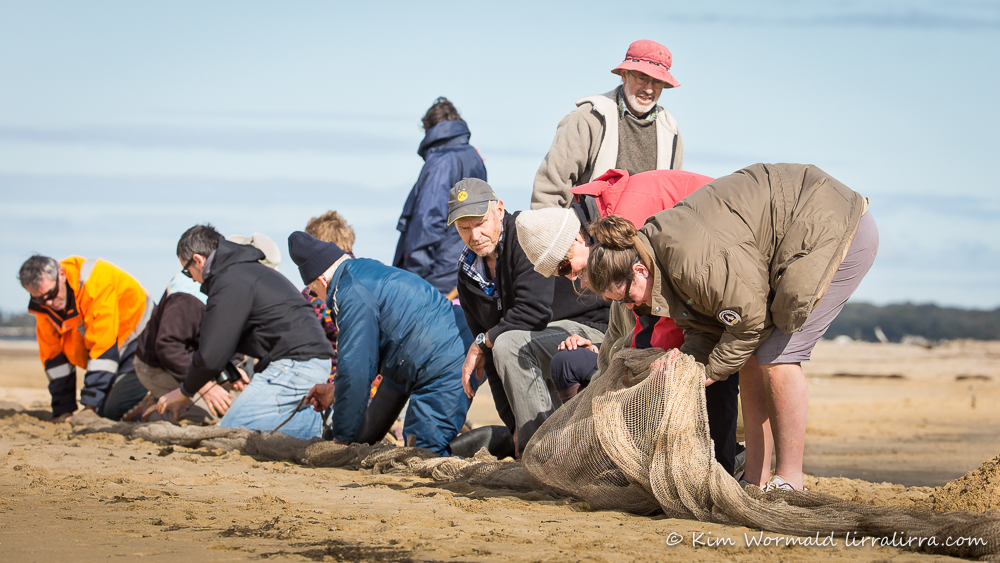
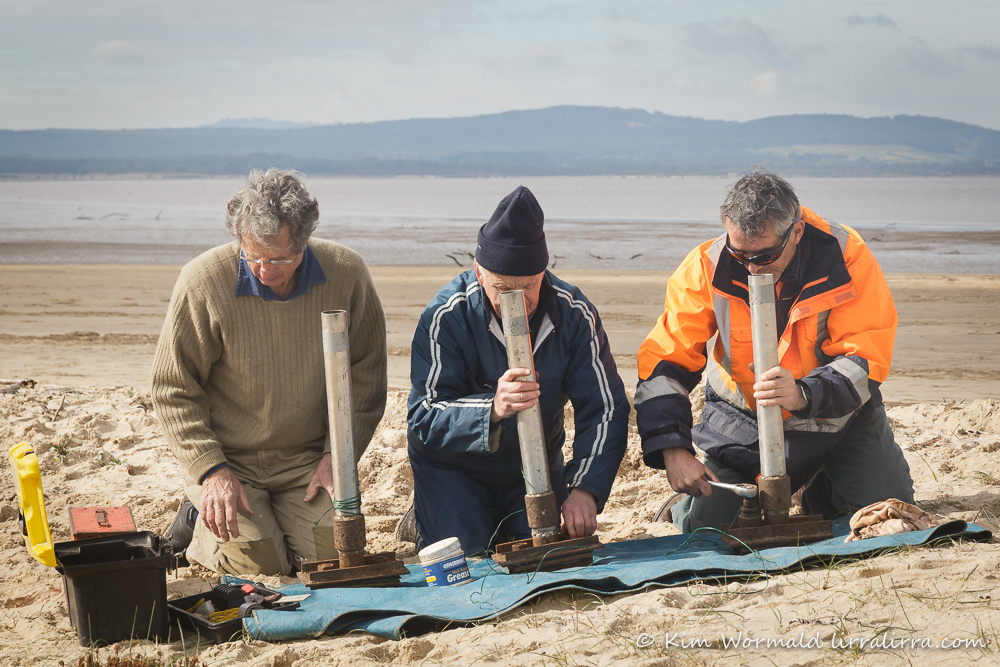
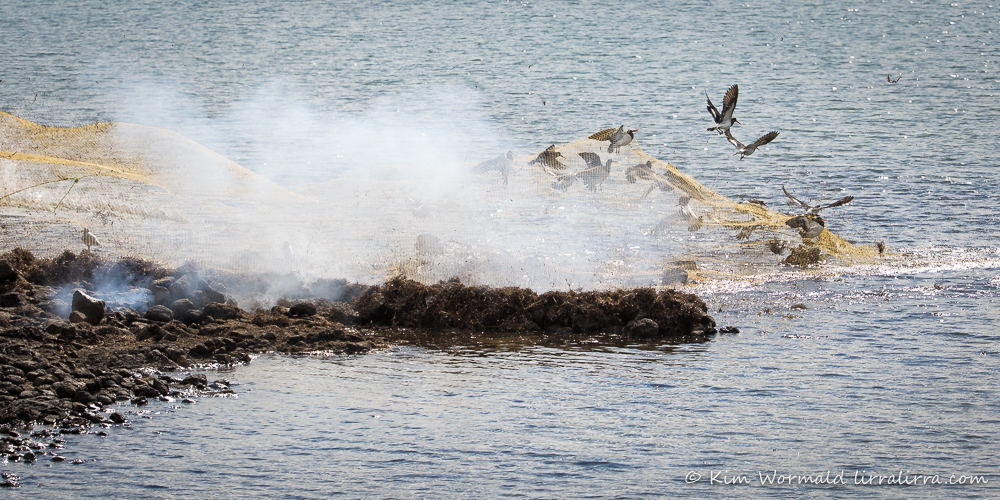
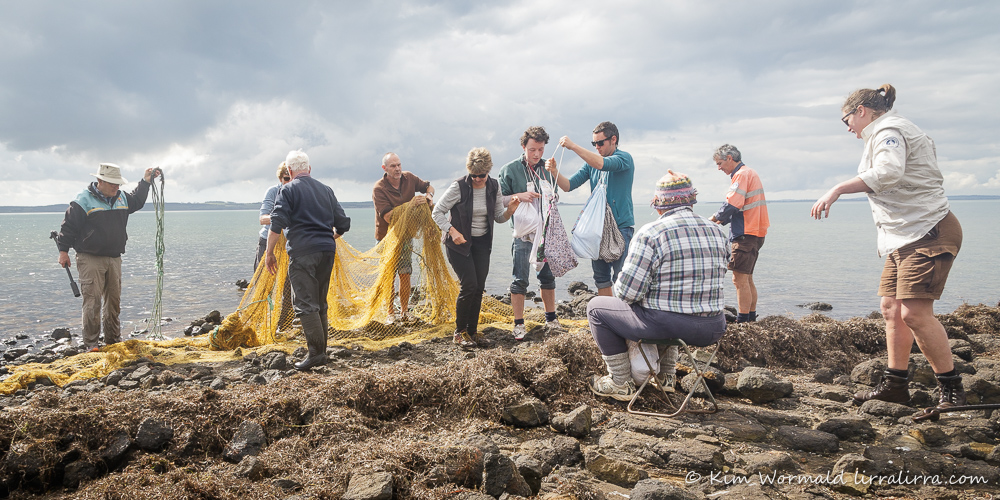
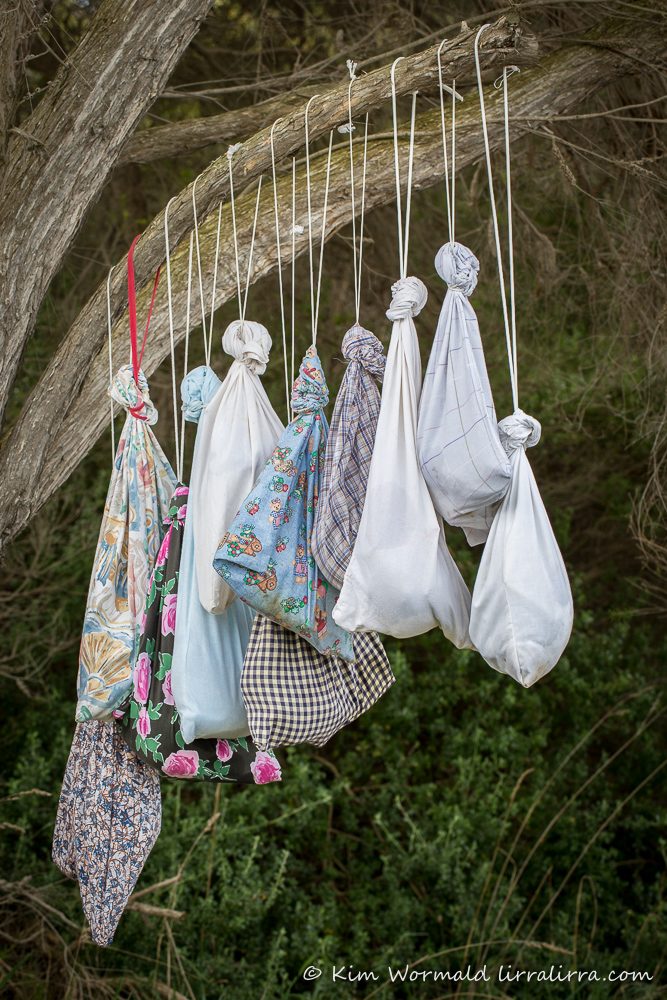
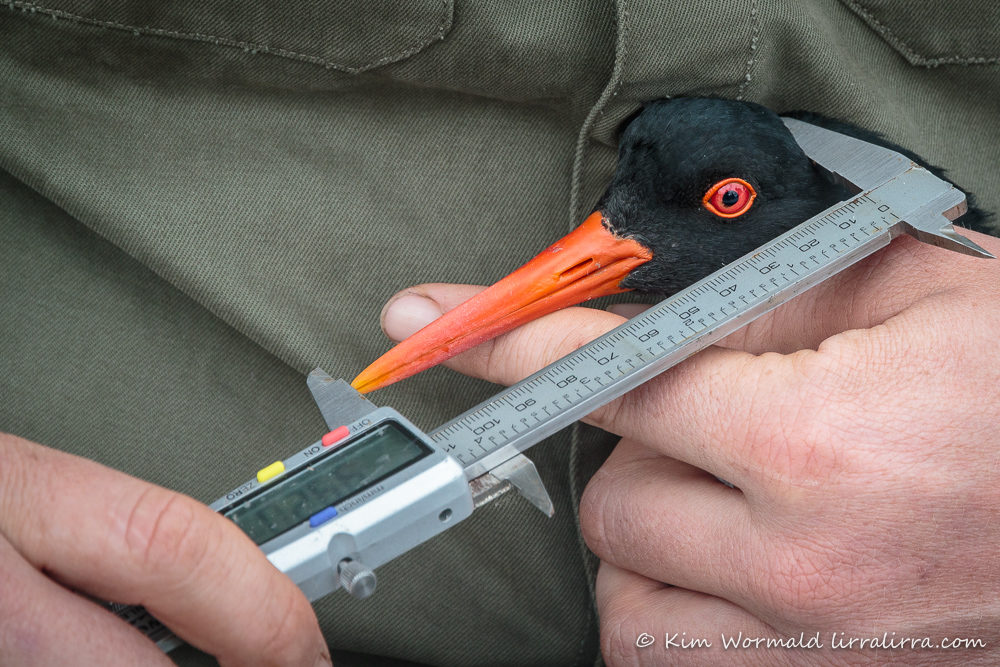

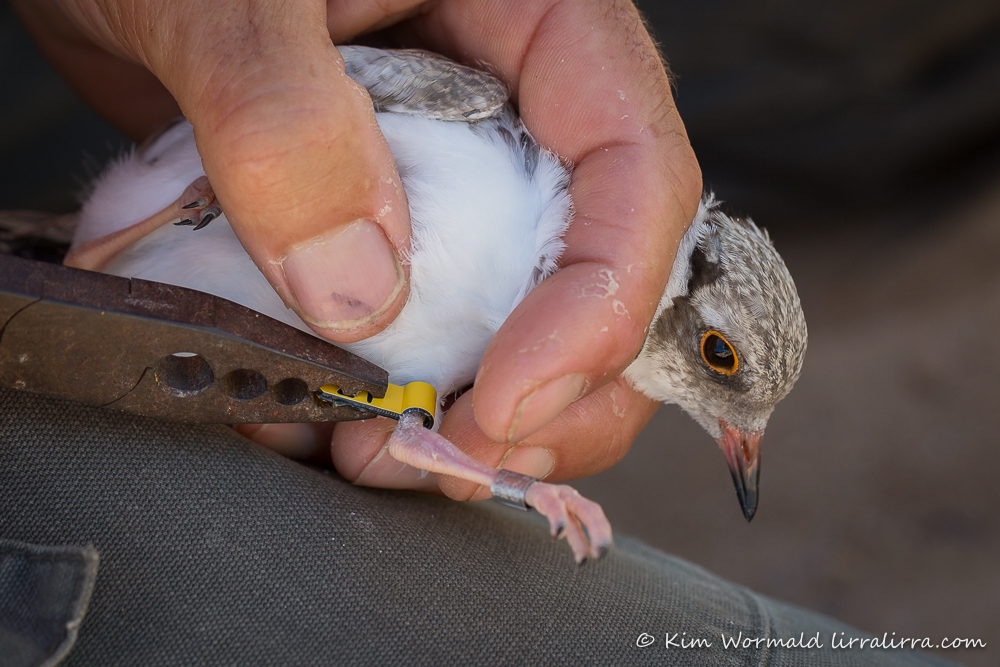
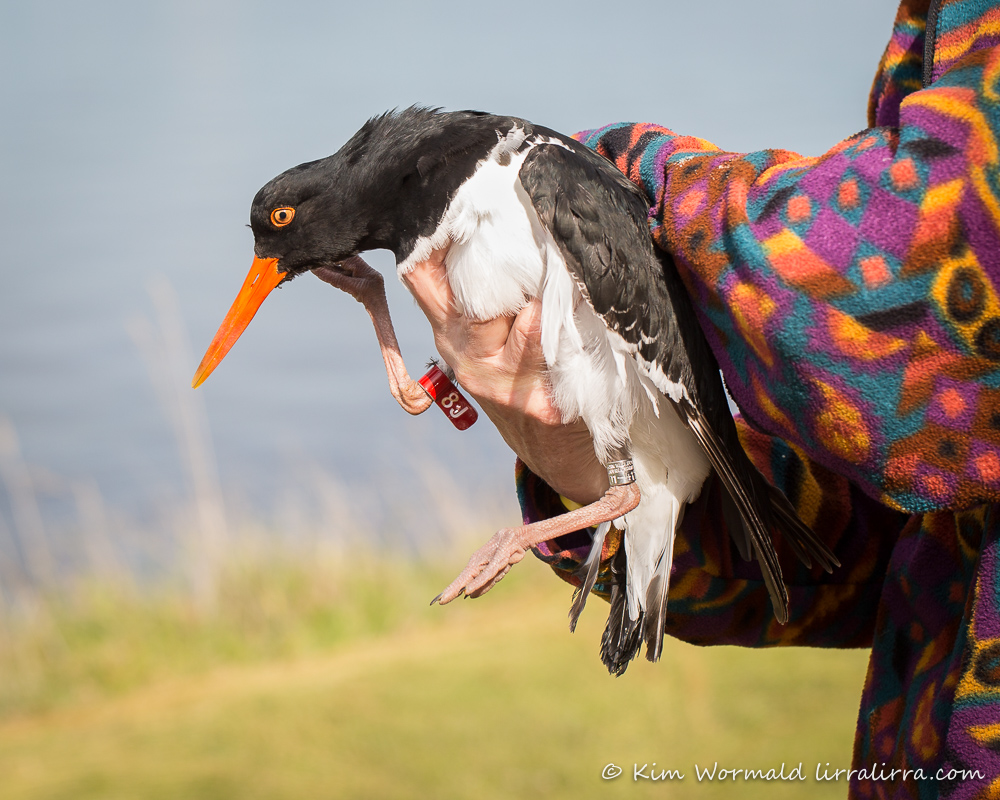

A great story
Thank you Peter
Hi Kim,
10 out of 10 for your Photo Essay…..a very interesting way to tell a story.
Love it. 🙂
Thank you Carole, as a teacher I especially like your comment 🙂
Fascinating!
Thank you Laura
Awesome!
Thanks Lilla
Very interesting! It can’t be much fun for the birds but the study is so important and will help with their conservation and protection in the long term 🙂
I wonder if some of them are crazily adventurous and don’t mind as much as others. I know when I’ve seen Hooded Plover chicks caught that their parents have been surprisingly relaxed about it, almost as though they understood the process. I’m sure that some are unimpressed but they are released as quickly as possible. You are so right about their conservation and protection.
How interesting! Thanks for sharing! What great people helping out these lovely birdies.
I totally agree Tam! The birds would have suffered so much if we didn’t know enough to advocate for them.
nicely done kim!
Thank you Glenn
Great essay, Kim; very informative commentary and the photos are excellent.
Thanks Neil. I was lucky to be able to spend time with the VWSG and document their work. Where would the world be without the tireless work of volunteers like these skilled people?
Wow, wow and wow.
Ethics, concern, and a truly beautiful bird.
What a brilliant subject for an essay – and executed in your usual stunning style.
Thank you EC. It was a challenge, in many ways, but I’m glad I managed to get images that tell the story
Bless you for your efforts!
Thank you Cloudia, much appreciated
Aren’t those bands uncomfortable for the birds? When they test on their beat, wouldn’t the tag sick into them?
I’m not sure what auto-correct has done do your second sentence but I think I understand your point. They do look uncomfortable but they are designed to ensure that they cause minimal discomfort. I’ve recently learned that up to 5% of banded bats were having issues so the bat banding program has been suspended.